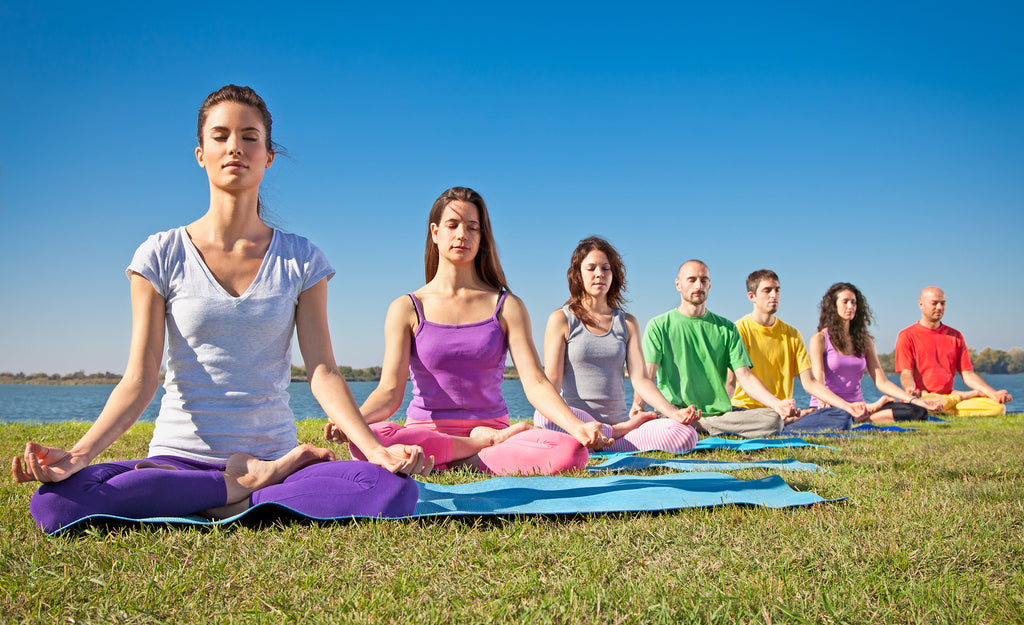Are you a new meditator who wants to learn how to meditate properly so you can enjoy all its benefits?
Maybe you are an experienced meditator, or someone who has tried meditation in the past (but given up in frustration).
If so, you may be curious about how to boost your experience, get back on track or enjoy even deeper levels of this powerful practice.
Whatever your reasons, you can get started right now with our 12 simple steps.
And if questions arise, you will find answers to the most common ones and a brief introduction to different types of meditation (including High-Tech Meditation®) to help you find the one that is right for you.
1. Choose A Length of Time That Suits You

If your first question is “How long should I meditate?” you’re not alone.
People also ask: “Is ten minutes a day enough?” “Is an hour too long?”
Depending on who you ask, the answer may differ. Some systems recommend 20 minutes twice a day while others swear it is best to meditate an hour every morning, or to set aside two half hour sessions, one when you awaken and one at night.
The length of your meditation session is a personal decision.
It depends in part on your lifestyle and in part on your tolerance for sitting still, which (I promise) will expand with more practice.
By experimenting, you will find what works best for you.
If you are brand new, start slow. Even five-minutes a day can be a good start.
Set a timer if you need to.
As meditation feels more comfortable, extend your time.
2. Scheduling: Your Key to Long Term Success
Schedule a time for your daily practice. The same time every day is good. But if that’s not an option, pick times that fit your schedule and responsibilities.
Set reminders for yourself until regular meditation becomes a habit like brushing your teeth or eating your meals.
You will get the most from your practice if you meditate daily or on some regular schedule.
Consistency is what gets results.
3. Create a Meditation Corner
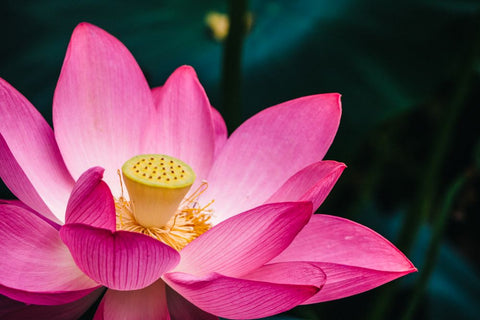
A meditation corner is any space where you can sit comfortably, free from interruptions, for the duration of your meditation.
It could be a spare room, the corner of a bedroom or study, a sun porch or anywhere that promotes peace and quiet.
Make it a space you like. One that calls to you when it’s time to meditate.
You may want to keep objects there that convey a sense of peace, inspiration or comfort.
Incense or an essential oil diffuser are possible good additions, as are banners or posters with inspirational sayings or images.
However you design your meditation corner, make sure it is a place you love to visit.
4. Don’t Forget This Critical Element
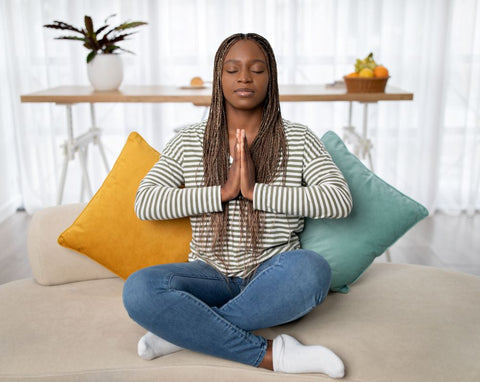
Comfort is essential.
Wear comfortable clothes and sit in a position that works for your body.
If you enjoy sitting cross legged (or in a lotus position) on the floor go for it. But you’ll get all the same benefits sitting in a chair.
Pick a place that allows you to sit up with your spine erect using back support as needed.
Don’t be concerned if your erect spine slumps or your head drops down while you meditate. That is normal.
5. What’s the Best Way to Get Started Meditating Properly?
Sit comfortably. Then watch your breath as you do several rounds of the following:
Breathe in for six counts, hold your breath for another two counts, breathe out for four counts and hold for four.
After a few rounds of breath work, notice how much calmer you already feel.
6. Settle In & Enjoy

After the intro breath work, relax and breathe normally with your eyes closed.
Sit quietly.
There’s nothing else to do during this time.
If you feel impatient, or wonder what time it is, open your eyes and look (briefly) at a watch or clock.
Then close your eyes and keep meditating.
7. Your Mind is Active. Now What?
If your mind is active, give it something positive to grab on to.
Like your breath.
Notice it coming in, then going out, following no particular pattern. You are relaxed and at ease, just being.
There is nothing to do and nowhere to go. As you breathe in say to yourself: “I breathe in,” and as you breathe out say to yourself, “I breathe out.”
Continue until you feel your thoughts ease and your mind become clearer and calmer.
8. This Could Work Even Better

Repeat a positive statement (affirmation) to yourself. Start by saying “here and now in this moment” followed by something like: “I am peaceful,” “I am calm,” “I love myself,” “I love my life.”
For greater effect, flow positive emotions while you say your affirmations.
Be sure your affirmations are positive. Never state what you aren’t, as in “I’m no longer broke.” Instead: “My life is full of abundance.”
Or give this a try.
When you breathe in, say to yourself: “I accept myself.” When you breathe out say: “I release what doesn’t serve me. All is well.”
Continue until your mind settles. If it doesn’t, that’s OK. After all, thinking is what minds do.
If you like affirmations, our Synch Up soundtracks, a series of powerful affirmations to support your meditation practice and your life, are for you.
9. Focus On the (Musical) Notes
If you meditate using Synchronicity® High-Tech Meditation® and you feel anxious or your mind is active, focus on the music, one note at a time.
Sound tracks are available that promote alpha brain waves for a light meditation, or theta waves for a deeper experience.
Delta brain wave technology is also available for serious meditators.
If your mind wanders, gently return your attention back to the music. Listen for each note.
10. Remember This Above All

Be patient.
If you have an active mind you’re normal. Bring your focus back to the music or to your breath, or a positive affirmation.
Remember, there is no wrong way to meditate.
Relax and be OK with whatever experience is happening in the moment.
11. Always End Like This
Finish your meditation with a loving intention.
For example, imagine moving peacefully through your day and enjoying a restful evening before sleeping soundly through the night.
Or make an intention to enjoy your day at work, relaxing during lunch and engaging in a favorite activity at the end of the day.
Whatever it is, send your positive intention out into the world.
12. Open Your Eyes

When your meditation ends, give yourself a few minutes to come slowly back into the day. Then open your eyes and give yourself a pat on the back.
Congratulations! You just meditated.
What is the purpose of meditation? OR why bother?
At its simplest, meditation is being present in the moment.
When you are present in the moment you no longer worry about what happened in the past or what might go wrong in the future.
That’s why your breath is a good focus.
Unless you’ve mastered time travel, you can’t breathe in the past or in the future.
You can only breathe in the present moment.
Focusing on your breath will keep you there.
Staying present in the moment helps you stay balanced in our imbalanced world, which is meditation’s main purpose.
What does imbalance look like?
It has many forms.
Anger at what you can’t control, frustration with things that don’t go the way you believe they should. Big emotional swings such as being over the moon with excitement one minute and in the pits of despair the next.
Feeling like your life is out of control, or that you’ll never be free of whatever causes you to suffer are other signs of imbalance.
The good news is, the more you meditate the less you worry about what previously kept you in a state of imbalance.
Which is why meditation is such a powerful tool.
Meditation FAQs
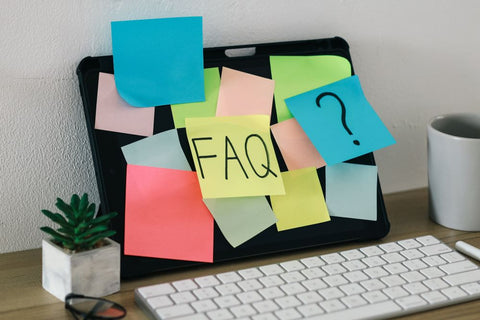
Is meditation after eating OK?
It is best to meditate on an empty stomach. If you meditate right after eating, you may fall asleep because your energy is being drained by digestion.
However, if you have no other time to meditate, doing so after eating is better than not at all. In that case, eat a light meal so less of your energy is used for digestion.
Sit upright without back support to help you stay awake.
What should I think about while meditating?
Let your thoughts come and go during meditation. Welcome them and release them on their way.
Or picture them jumping into the gondola of a hot air balloon and lifting off. Wave goodbye to them as they drift off.
Thinking is normal. You’ll never get rid of your thoughts.
Instead, gently bring your focus to something else, your breath, a positive affirmation or a hot air balloon.
Can I meditate lying down?
Lying down is not recommended since chances are good you will fall asleep.
What are some different types of meditation?

There are a variety of different types of meditation to choose from. Here are some of the most popular:
- Mantra meditation. A mantra is a word that you repeat over and over to help focus your mind during meditation.
TM, or Transcendental Meditation is a form of mantra meditation.
You can learn it from a certified teacher who will give you a unique Sanskrit word to use as your mantra and instruct you in its use.
- Mindfulness meditation. Mindfulness meditation teaches practitioners to stay in the moment through awareness of their thoughts without judgment.
Much of the research on the benefits of meditation are based on practitioners of this system.
- High-Tech Meditation. Synchronicity High-Tech Meditation® uses technology to help you achieve deep meditative states quickly and with greater ease than with more traditional systems.
Research demonstrates that meditators who regularly use High-Tech Meditation experience a four-fold increase in results and benefits over "low-tech" methods.
- Walking meditation. According to renowned meditation teacher Thich Nhat Hanh, a walking meditation is walking with reverence. It is walking mindfully, aware of each step.
Try walking with your breath. Take two steps with each in-breath and three steps with each out-breath.
As with other types of meditation, the benefit comes from being present in the moment, this time while walking.
Since walking is a physical activity, a walking meditation is a way to bring body and mind in balance with each other.
Congratulations! Enjoy Your Amazing Life!
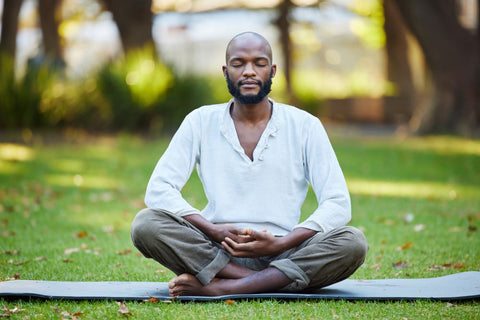
Now that you know the basics of how to meditate properly, all you have to do is follow these 12 simple steps.
And when you do…
You find you are less angry when things don’t go your way. And if you do get angry, you choose not to mindlessly react with harsh words or worse.
And what about that promised package that didn’t arrive overnight when you needed it? Or your computer that chose to crash when you were preparing an important report on deadline? Or the tire that picked up a nail and went flat on the way to work?
Amazingly you don’t get as anxious as you once did when faced with these kinds of disappointments. Instead, you choose to be OK with what is happening in the moment.
This is what it means to be balanced.
Thanks to meditation, you are calmer, less anxious and less stressed. You feel unexpectedly happy and fulfilled.
Why not pick a time, sit comfortably and get started today.


